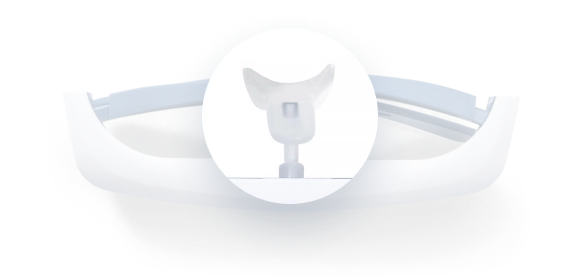Blue light therapy is emerging as an effective, non-invasive way to improve conditions like winter blues and sleep issues. Growing evidence suggests that exposing your eyes to a blue light devoid of infrared and ultraviolet every day can have many physiological benefits.
Understanding its benefits can be a great way to optimize your sleep, boost mental function, and improve overall well-being.
Let’s discuss the many health benefits of this therapy and some easy-to-implement tips that can help you maximize them.
Regulates your internal clock
One of the most important benefits of blue light treatment is that it can help set your body’s internal clock. Your body has a way of regulating several body functions, including the sleep-wake cycle, hormone release, and body temperature, using its internal clock.
When this clock is disrupted, it can lead to several health issues, most notably poor sleep quality and duration.
Blue light therapy helps control the secretion of melatonin, a key hormone that regulates sleep. While melatonin is secreted in the evening to tell the body that it is time to sleep, its secretion reduces in the morning to give the body a signal to wake up.
However, the mechanism can be disturbed by artificial lighting, inconsistent sleep, and jet lag when you travel across different time zones. As a result, you may experience problems like hormonal imbalances and sleep disturbances.
Blue light, especially in the morning, can help reset this internal clock. It suppresses melatonin production, promoting alertness and helping to establish a regular sleep-wake cycle. You feel refreshed and ready to get going.
It is especially useful when you have sleep problems like jet lag. Blue light therapy helps regulate your internal clock to mimic daylight and improve your sleep cycle for a better-controlled metabolism.
The Luminette Light Therapy Glasses offer a great way to incorporate blue light therapy into your daily life without disturbing your routine. You can wear Luminette over your prescription glasses or contact lenses, as it does not dazzle or disrupt your eyesight.
Enhances your mood
Blue light therapy can also help you improve your mood, especially in the morning. It has been shown that serotonin is increased in the brain when your eyes are exposed to blue light of a certain wavelength, peaking around 470 nm.
This surge of serotonin helps you reduce feelings of gloom and anxiety and promotes a more positive emotional state.
Serotonin is a neurotransmitter responsible for regulating mood, and the amount of serotonin in the human body partly depends on exposure to natural light.
In winter, when the days are shorter, or in areas with limited exposure to natural light, the levels of serotonin can reduce, leading to increased feelings of sadness and anxiety.
a. Cure for the winter blues
Blue light therapy involves exposing the body to light similar to natural sunlight, which impacts serotonin levels in the brain. Daily use of blue light in the morning is associated with increased serotonin levels, which in turn enhance mood and emotional health.
This makes blue light especially effective during the winter months when people are likely to feel a bit down. A session of blue light therapy in the morning can help eliminate the "winter blues."
Exposure to blue light can also improve your mood if you are feeling low due to the gloomy weather.
Incorporating blue light exposure into your daily routine, especially during the winter, can lift your mood, increase energy levels, and reduce feelings of sadness and anxiety.

Boosts cognitive performance
Blue light therapy has been studied extensively and is known to enhance mental performance by improving alertness, memory, and focus. Exposure to blue light, especially in the morning, has a positive impact on the brain, enhancing productivity.
Blue light therapy has been found to improve cognitive function in various ways, including:
a. Engages neural circuits
Blue light therapy can enhance cognitive capabilities by stimulating the part of the brain that controls awareness and focus. Morning exposure to blue light can make you more awake and active.
It may also extend your ability to pay attention to tasks and information for an extended period of time. This is a great advantage for students, business people, and anyone who needs to be on the lookout for things in their workstations.
b. Boosts memory
When used regularly, blue light has been found to improve memory formation and storage in the brain.
Blue light therapy is good for memory, as it activates brain structures linked to cognitive ability. A study revealed that enhanced memory consolidation and recall were associated with exposure to blue light.
This makes blue light a great tool for boosting memory performance, especially in scholastic and occupational environments.
Also read: How Can Light Therapy Revolutionise Your Creative Process? Uncover the Truth.

Manages chronic pain
The use of blue light in chronic pain control has been found to be safe and effective. Research indicates that it may provide an effective non-pharmacological approach to managing pain in patients with fibromyalgia and other persistent pain conditions.
It is well established that people with chronic pain, such as fibromyalgia, have sleep disturbances and enhanced stress reactivity. These underlying factors can be managed with the help of blue light therapy, which will help provide relief from pain.
For instance, a study conducted in the Pain Reports showed the effect of blue light on sleep quality and decreased pain levels in people with fibromyalgia.
Both patients and caregivers responded that they felt less pain and that their mood and ability to function in their daily lives improved.
Blue light therapy can help manage pain through two main mechanisms:
a. Enhanced serotonin levels
Blue light is known to assist in maintaining serotonin levels, which are crucial for managing mood and pain. Elevated serotonin levels have been known to reduce sensitivity to pain and enhance mood.
b. Reduced inflammation
In a study published in the Journal of Biophotonics, participants’ exposure to blue light was found to decrease inflammatory markers, which indicates that blue light indeed has anti-inflammatory properties.
Furthermore, blue light therapy can effectively help to alleviate pain due to the increase in the production of endorphins—the natural painkillers of the human body. This effect is similar to the relief felt after physical activity raises endorphin levels in the body.

Alleviates jet lag
If you have flown across several time zones, you know how brutal jet lag can be. It often manifests in fatigue and overall discomfort. Jet lag happens when your internal biological clock is in a different phase from the local time of the new place.
This desynchronization makes it difficult for the body to adapt to the new time zone, and as a result, it may exhibit symptoms such as delayed sleep, problems staying asleep, and daytime sleepiness.
If done systematically, blue light therapy can greatly help to minimize the effects of jet lag and its duration. For instance, if you have to wake up early in the morning to catch a flight or go to work, you can use blue light to resynchronize your body clock accordingly.
When you go east, the time zone you encounter will be ahead of you. Blue light therapy in the morning will allow you to wake up earlier and feel more awake during the day. On the other hand, if you go from west to east, the blue light helps you stay awake longer and adapt to a new time zone.
Research has also proved the efficacy of blue light in eliminating social jet lag. A study done on the effects of blue light on sleep found that the participants who used the blue light therapy had reduced symptoms of jet lag and adjusted to the timetables faster than those who did not use the blue light therapy.
Another study showed that exposure to blue light advanced participants' sleep-wake cycle, helping them synchronize their biological clocks with the new time zones.
Also read: Effective Strategies for Travelers: Natural Ways to Overcome Jet Lag and Improve Sleep.
Mitigates menstrual and premenstrual disorders
Menstrual and premenstrual disorders affect the quality of life for many women, causing mood swings, fatigue, irritability, and physical discomfort. These symptoms can interfere with daily life, work, and social interactions.
Although conventional treatments exist, blue light therapy has emerged as an innovative intervention because it is non-invasive and has no side effects. This therapy helps modulate hormonal balance and neurotransmitters, thereby controlling mood and energy levels.
Blue light therapy increases happiness and reduces anxiety by realigning biological rhythms and regulating serotonin secretion. Consequently, it helps alleviate mood swings and irritability associated with menstrual and premenstrual disorders.
Studies have found that light therapy, especially blue light therapy, can be effective in alleviating PMS (premenstrual syndrome) and PMDD (premenstrual dysphoric disorder) symptoms.
A study showed that those who underwent light therapy had their moods and energy levels boosted compared to the people who did not go through light therapy.
Supports weight management
Blue light therapy has recently been suggested as useful for weight loss initiatives. It can impact metabolic pathways and control hunger and energy. This noninvasive treatment can be used as a supplement to other weight loss or weight management goals.
Blue light impacts the production of hormones that regulate hunger and metabolism in the human body. One of the hormones, ghrelin, is also known as the "hunger hormone."
It is usually released before eating and tends to drop right after. Daily exposure to blue light in the morning has the potential to regulate the secretion of ghrelin, thus improving the body’s hunger signals and helping to prevent overeating.
In addition, blue light therapy helps increase energy levels and mood, which are key indicators of an active lifestyle. The higher your energy levels, the better your chances of being active and burning extra calories.
A recent study showed that individuals exposed to blue light reduced their appetite and increased their alertness compared to the control group. While the application of blue light therapy in this area is still in its early days, the initial results are promising.
Promotes heart health
Blue light therapy has also been shown to promote cardiovascular health. New studies show that blue light exposure benefits the cardiovascular system. Two mechanisms are supposed to result in this effect:
a. Regulating blood pressure
Hypertension, or high blood pressure, is one of the most significant factors that may lead to heart disease and stroke. There is significant scientific evidence suggesting that exposure to blue light results in decreased blood pressure.
A study published in the European Journal of Preventive Cardiology noted that a group of participants who were exposed to blue light had their systolic blood pressure reduced significantly.
This effect is thought to be due to the generation of nitric oxide, a molecule involved in the widening of blood vessels and normalizing blood pressure.
b. Improving heart function
Blue light also helps to improve overall heart performance in addition to reducing blood pressure. Better blood vessel flexibility has a positive effect on circulation.
Oxygen and nutrients are effectively delivered to the heart and other important organs. This can help improve the heart's overall health and reduce the incidence of cardiovascular diseases.
Blue light exposure has also been shown to enhance endothelial function. The endothelium is a single layer of cells located on the inner side of the heart and blood vessels, and it is essential for the proper functioning of the vascular system.
When the endothelium is healthy, the blood vessels are less stiff, which is an important marker of good heart health.

Reduces symptoms of trauma-related stress
While still in its infancy, blue light therapy is emerging as a complementary treatment for managing the symptoms of trauma-related stress.
Blue light therapy could be helpful in this situation, as it helps to increase the quality of sleep and decrease the level of anxiety, which are the major mediators of trauma-related stress symptoms.
Trauma-related stress is accompanied by problems such as lack of sleep and nightmares, which further worsen other symptoms. Blue light therapy helps to reset the body's natural rhythms for enhanced sleep quality.
Morning exposure to blue light assists the biological clock in synchronizing and easing the process of falling asleep at night and preventing frequent waking during the night.
It has been shown that an enhancement in the quality of sleep can positively impact mental health and coping mechanisms in those with trauma-related stress.
Besides improving sleep quality, blue light therapy is effective in decreasing the levels of anxiety, another symptom of trauma-related stress. The increased serotonin levels after blue light therapy are thought to be responsible for reducing stress.
Improves skin conditions
The use of blue light as a treatment modality is well-established, especially for skin conditions such as mild to moderate acne. Blue light therapy is effective in acne, as it targets the bacteria Propionibacterium acnes involved in its development.
When blue light penetrates the skin, it forms reactive oxygen species, which eliminate acne-causing bacteria. This, in turn, lowers the number of acne-causing bacteria on the skin and helps prevent future acne breakouts.
Blue light therapy can also be used to treat inflammation in acne-prone skin and problems that may lead to breakouts, which will, in turn, give your skin a clearer and smoother surface.
Several studies have shown the benefit of blue light therapy with light-emitting diodes in treating acne.
For instance, a study published in the Journal of Cosmetic and Laser Therapy showed that participants who were given blue light therapy twice a week for four weeks saw their number of lesions reduced compared to the control group, who did not receive the treatment.
Another study in the British Journal of Dermatology concluded that blue light therapy was helpful in treating patients with inflammatory acne and improving skin conditions.
It is important to note that blue light therapy is not exclusive to acne treatment but can be effective for other skin conditions. It can also be helpful in stimulating immune cells in cases of psoriasis and eczema since it minimizes the inflammation of the skin and enhances the rate of skin repair.
Tips to maximise blue light therapy
Blue light therapy effectively improves your quality of life by regulating sleep and mood. Here are some tips to help you maximize the advantages of blue light therapy:
a. Timing is key
You should use blue light treatment appropriately to facilitate the required effects. You should use blue light in the morning for improved sleep and mood. It synchronizes the body clock and improves the quality of your night's sleep and daytime wakefulness.
b. Consistency matters
Consistency is another important aspect since blue light therapy must be used on a regular basis for the treatment to be effective. Make it a part of your daily routine for the best results.
The duration of each session may range from 20 to 60 minutes, depending on the condition being treated and the type of device being used.
c. Monitor and adjust
Record your therapy sessions and notice if your health improves or deteriorates. In general, tracking your progress when using blue light therapy for sleep, mood, or skin conditions can tell you whether the treatment is viable for you.
If you experience any side effects or do not see the changes you expect, try changing the frequency or session length.
d. Clean and maintain your device
It is also important to frequently clean your blue light therapy device, like the Luminette light therapy glasses, to ensure it functions properly and emits the appropriate amount of light.
e. Stay hydrated and integrate other supportive practices
For best results, combine this therapy with other healthy habits like getting to bed early and cutting down your screen time. Drink plenty of water, eat balanced meals, and exercise regularly. These will help you improve your sleep quality when combined with the right blue light therapy routine.
Takeaway: Enjoy the benefits of blue light therapy
Blue light therapy offers a range of benefits, including improved sleep quality, enhanced mood, alleviation of chronic pain, and support for weight management and cardiovascular health.
It also aids in treating jet lag and menstrual disorders. Regular blue light therapy can significantly enhance well-being by regulating sleep patterns, boosting energy levels, and improving mental health.
Experience the effects of blue light therapy with Luminette light therapy glasses. These innovative glasses provide optimal blue light exposure, helping you improve sleep, boost mood, and increase energy levels.
Convenient and portable, Luminette glasses are the perfect solution for integrating blue light therapy into your daily routine. Try Luminette today and take the first step towards a healthier, more vibrant life.
Enhance the Benefits of Blue Light Therapy
Incorporating light therapy into your daily routine can amplify the effects of blue light therapy, especially in combating low energy, seasonal mood changes, and disrupted sleep patterns. Light therapy provides a controlled, bright light that mimics natural sunlight, helping to regulate your body’s internal clock and improve overall well-being.
For a versatile and convenient solution, Light Therapy Glasses allow you to experience light therapy on the go, while a Light Therapy Lamp serves as a reliable option for use at home or in the office. Together, these tools can help enhance your energy levels, mood, and focus, providing the full range of light therapy benefits.
FAQ
Is blue light therapy safe?
Blue light therapy is generally considered safe when used as directed. However, it is essential to follow guidelines to avoid potential side effects like eye strain or skin irritation.
What are the disadvantages of blue light therapy?
Blue light therapy is effective for improving quality of life, but it has some drawbacks. Exposure to blue light, especially if not at the right wavelength, can lead to eye strain. Some individuals also report experiencing headaches after using this therapy. Additionally, those with skin issues or photosensitivity may experience worsened symptoms due to sun exposure.
To avoid these side effects, using only reliable devices like Luminette that emit white light enriched with blue at a specific wavelength, peaking at around 468 nm, is crucial.





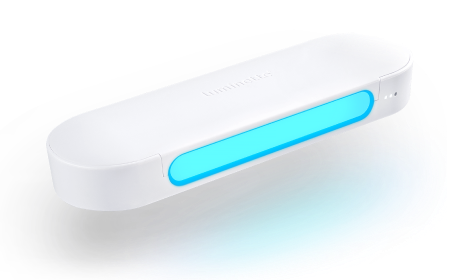


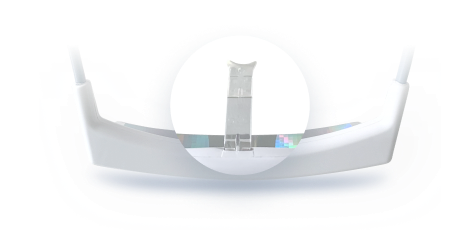


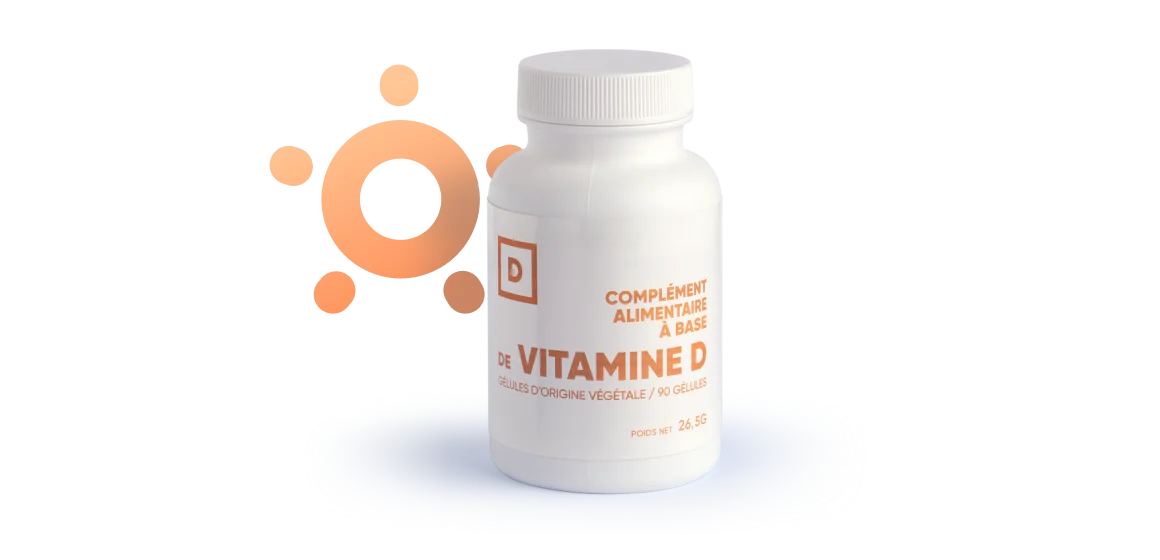





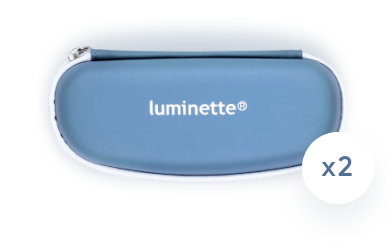





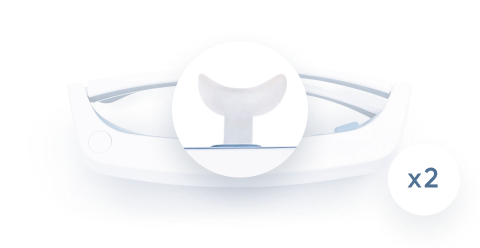






















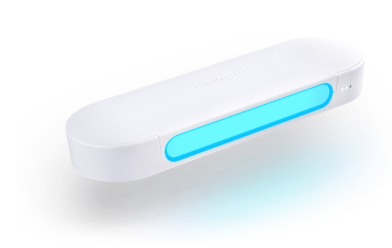




 Please note
Please note








